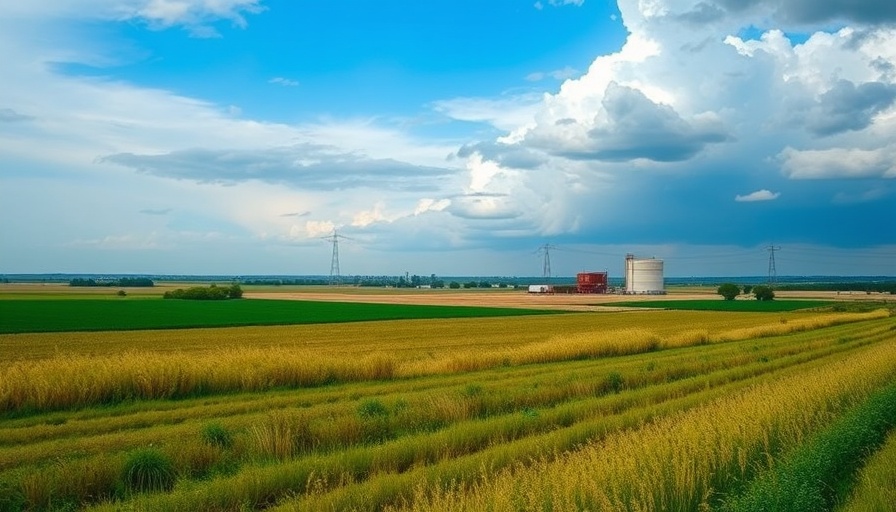
Understanding the Decline in Pennsylvania's Impact Fee Revenue
In 2024, Pennsylvania's revenue from its impact fee on natural gas development fell to $164.5 million, reflecting a $15 million decrease from the previous year. This drop is part of a larger trend, as the revenue collected was around $100 million less than in 2022, which had recorded the highest earnings to date. This decline has significant implications for local communities, environmental initiatives, and energy policy.
What is the Impact Fee?
The impact fee, established in 2012, is levied on companies engaged in fracking and natural gas drilling. This fee is intended to fund local initiatives aimed at mitigating the environmental and infrastructural impacts brought about by drilling operations. The fee structure is designed such that the tax paid by drilling companies varies according to the well’s age and the average cost of natural gas. Newer wells attract higher fees that are crucial for funding local development projects.
Environmental Considerations and Community Impact
While the impact fee aims to support communities grappling with the effects of drilling, concerns remain about the environmental risks associated with natural gas extraction. Formerly active wells can become hazardous if abandoned improperly, leading to pollution and health risks for nearby residents. As noted by the Pennsylvania Public Utility Commission (PUC), approximately $86.5 million of this year's fee revenue will be allocated to municipalities affected by drilling.
Revenue Allocation: Who Benefits?
The distribution of the collected fees is pivotal. Each year, a portion of the funds goes towards the Marcellus Legacy Fund, which is focused on statewide environmental initiatives and infrastructure projects. For 2024, $57.7 million is dedicated to this fund. The remainder assists various state agencies, including the Department of Environmental Protection and the Emergency Management Agency, highlighting the statewide impact of local drilling activities.
Legislative Changes on the Horizon
In light of these trends, the Pennsylvania Senate has recently approved a bill that aims to withhold funds from counties that impose strict limitations on natural gas development. This legislative action seeks to incentivize local governments to encourage drilling activities, thereby boosting the revenue generated through impact fees.
Small Communities vs. Big Energy: A Delicate Balance
Local voices like those from the Marcellus Shale Coalition emphasize the benefits that natural gas development brings to the state, including job creation and economic growth. However, for communities that face the brunt of environmental consequences, these benefits can feel overshadowed by the challenges they experience. Striking a balance between energy development and environmental safety is crucial for ensuring sustainable community livelihoods.
Economic Perspectives: Natural Gas and Pennsylvania’s Future
As fluctuating natural gas prices contribute to these revenue declines, the economic future of Pennsylvania remains complex and intertwined with the energy market’s condition. Residents have a vested interest in both the economic benefits and the territorial integrity of their local resources. Ongoing dialogue about energy policy and responsible resource management is essential.
Conclusion: Navigating the Future of Energy in Pennsylvania
The decrease in impact fee revenue represents broader challenges for Pennsylvania as it faces balancing energy development with environmental preservation. The outcome of the proposed legislation will likely reshape the landscape for natural gas drilling in the state and influence community resources going forward. As residents and stakeholders engage with these issues, the conversation surrounding natural gas's role in Pennsylvania's economy and environment will continue to evolve.
Take Action: Stay informed about local energy issues and advocate for sustainable practices that benefit both the environment and your community. Engage in local government discussions and support initiatives that promote a balanced approach to resource management.
 Add Row
Add Row  Add
Add 




 Add Row
Add Row  Add
Add 

Write A Comment